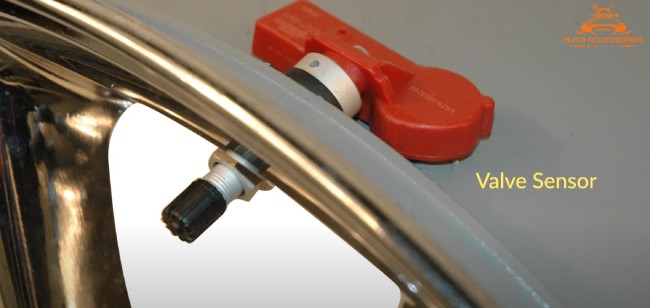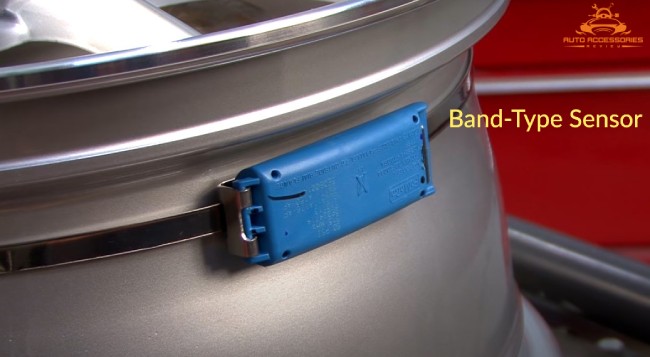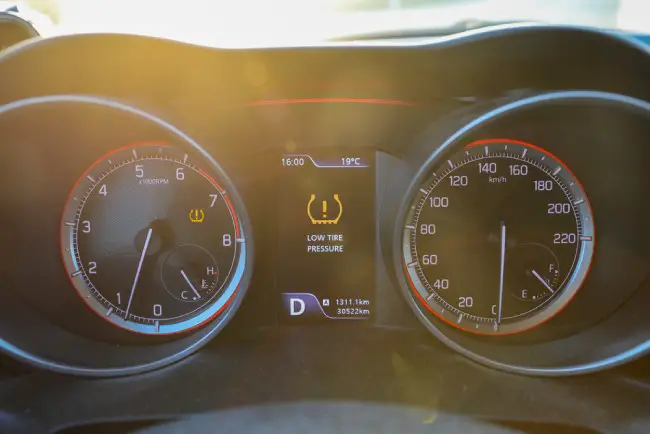TPMS stands for Tire Pressure Monitoring System. Its primary job is to monitor your car’s tires and tell you when they are too low to be driven on safely.
A TPMS is one invention present in new cars designed to keep you safe and make monitoring your car easier.
We will show you how to program a TPMS and decrease the risk of bad car performance because of the sensor.
How does the TPMS Sensor Work?
The TPMS is one of the least complicated systems in a car. When the system’s sensors detect low air in your tires, a warning light or message will appear on your dashboard. The best thing to do as the light appears is to take your car to a mechanic where they can perform maintenance on the tires.
Another option is to do it by yourself, but make sure you have enough information on what you’re doing before attempting to do it. Fixing cars without proper direction has caused many injuries and I’m sure you wouldn’t like to be one of them.
How to Program TPMS Sensors: Step-by-Step
-
Get Your Own Tools
You’ll need TPMS programming and diagnostic tools. If you have updated software, then this will likely be provided.
Programming will be easier if you take advantage of your car’s manufacturer’s software updates.
-
Find the Sensor
The light will only appear on the dashboard if one sensor is inoperative. To find the sensor, you’ll need to use a scan tool.
You can determine where the sensor is by scanning the IDs on each wheel. Scan until the machine tells you where the inoperative sensor is.
-
Locate the Sensor’s Identification Number
To program the TPMS sensors, you’ll need to scan the car with the diagnostic tool in order to find the ID number of the sensor.
Your TPMS sensor cannot function without the correct ID number, which allows you to save time and get the right number by programming the wrong ID on the sensor.
Without programming the correct ID on the sensor, the vehicle’s TPMS will not function.
-
Program the Sensor
Now, select the model and year of your vehicle on the TPMS programming tool you are using.
Then, follow the steps on the program’s sensor menu.
After you deal with the starting instructions, select “enter” to continue.
A bunch of selections will appear, but you should choose the “copy sensor” option. You should get two choices, but the one to choose is “input ID.” Then type in the sensor ID number.
After you install the sensor, the next step is programming the tool. Make sure the TPMS sensor is of the correct frequency before you proceed.
Use your programming tool to insert pins into tiny holes in your TPMS sensor so that it’s firmly held in place. Push the TPMS down until it clasps onto the pins.
Now attach the safety latch so you can program the sensor with the ID number when its frequency matches that of the tool.
Types of TPMS Sensors
1. Valve Sensor

One type of TPMS Sensor is a valve sensor, and it’s the one that most modern vehicles use. This type of sensor uses four pressure sensors and a receiver to communicate with the electric control module or ECM.
The module then interprets this data and makes the warning light go off, so the driver is aware of the situation and maintenance can happen.
The only minor setback with this type of sensor, though, is that they have to be completely changed along with the tire.
2. Band-Type Sensor

Another type of TPMS Sensor is a band-type system. It’s more common in a lot of older Corvettes, Fords, Mercury, and Lincoln vehicles. The sensor goes inside the rim of the wheel and in front of the valve stem.
Unlike the valve sensor, the band-type does not need to be changed along with the tire. It can just be unmounted to change the tire and then attached to the new tire after.
3. Sensor-less TPMS
The final TPMS is sensorless and an indirect monitoring system. They use the car’s four-wheel anti-braking system.
This system measures the diameter of each wheel and uses special calculations to tell if the wheel is under inflated or not (tires with lower pressure usually are less in diameter).
This type of system is considered as a little less efficient and accurate than the others because the diameter of a wheel isn’t the end all be all of telling whether a tire is low in pressure.
It can show other things like tire size (if your tires are different sizes) and tread wear, which is common.
What is the Difference Between TPMS Programming and Relearning?
Other than TPMS programming, there is another way to add more information to a sensor. It is called relearning and there is a minor difference between the two methods.
For programming, the sensor must come completely blank, and information is then input, so it can fit the specifications of the car. A programmed sensor would function the same as the sensor that comes with the car.
Relearning, on the other hand, occurs when tires are rotated, or a new sensor ID is introduced to the car.
The vehicle records all the individual sensor IDs, so they can all be recognized by it and so accurate information on the tire pressure can be displayed (if a car has the pressure by location function).
What to do if the TPMS light comes on?
If your TPMS light comes on when you’re driving, try your best to get to the nearest gas station as soon as you can. When you get there, inflate the tires to the recommended pressure
If this doesn’t happen, then you should visit a mechanic to see if there is anything wrong with your tires and if they will need to be replaced.
Do not drive around with an illuminated TPMS light for too long. It can cause many issues that can lead to you being a road hazard to the people around you.
How do I Reset my Tire Pressure Light?

To reset the light, turn the car key to the “on” position without starting the car. Then, press the TPMS and hold. Don’t release it until the light blinks three times. After that, start the car and let it run for about 20 minutes.
TPMS Programming Tips
To save yourself a major headache, check to see if you have all the correct information for the programmer. Even one wrong thing can totally mess up the process and you’ll have to start all over again.
Do yourself a favor and do it properly the first time, even if it takes a little more time.
Another tip is to program the sensor before you install it. If you make a mistake, this will make it a lot easier to undo it, as you won’t have to uninstall the entire system.
TPMS Relearning Tips
To streamline the relearning process, check the instructions multiple times to make sure you are doing everything correctly.
Remember, it’s a lot easier to fix a mistake in a certain step than to tear it all apart and start all over again.
Another huge tip is to call the manufacturer of your car’s tech line, if you need help. They can walk you through the process and you’ll have another person to get your problem solved.
FAQs
1. Where is the TPMS reset button located?
Ans. You can usually find the TPMS reset button underneath your steering wheel. If not there, check around it and in the general area.










Leave a Comment